Subtotal: $
Checkout-

Beneath the Tree of Life
-

Sidewalk Ballet
-

The Eternal People
-

Robert Hayden’s “Those Winter Sundays”
-

The Pilgrim City
-

Not Just Personal
-

Editors’ Picks Issue 23
-

Madeleine Delbrêl
-

Covering the Cover: In Search of a City
-

Urban Series (Neighborhood)
-

In Search of a City
-

Readers Respond: Issue 23
-

Family and Friends: Issue 23
-

One Inch off the Ground
-

Re-Mapping Belfast
-

Serving Kings
-

Up Hill
-

City of Bones, City of Graces
-

Small Acts of Grace
-

In the Valley of Lemons
-

City of Clubs
-

Save Your Sympathy
-

From “In the Holy Nativity of Our Lord”

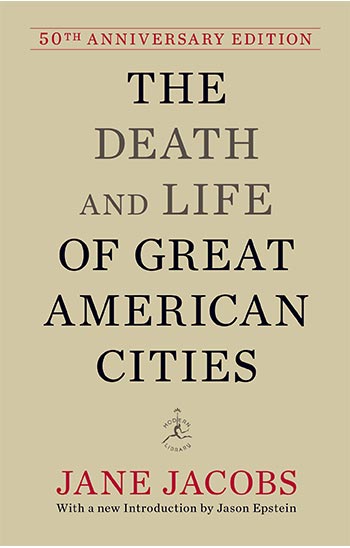
Jane Jacobs’s The Death and Life of Great American Cities (Random House, 1961) is a classic work of twentieth-century urbanism, its publication a gauntlet thrown down against all the received wisdom of urban planning of its day. And its author was unlikely: a Manhattan housewife and journalist, whose training in urbanism came primarily from her careful observation of how cities actually work, at the close-grain level of the sidewalk.
A good city is made up of good neighborhoods, she wrote, where the mixed use of housing and shopping and other kinds of business ensure a steady flow of human interactions throughout the day. What makes a city safe is what makes it interesting: the presence of people going about their affairs, weaving “a web of public respect and trust.”
The charm of the book is its intensely anecdotal nature. Jacobs describes the life of the West Village, and you’re drawn into it; this is a book about cities written by someone who loves her own with a fierce realism. Hovering behind the book is the history of her epic struggle with Robert Moses, the high modernist urban planner who, until she challenged him, was well on his way to disfiguring all of New York with his housing projects and highways. (See reading on page 66.)
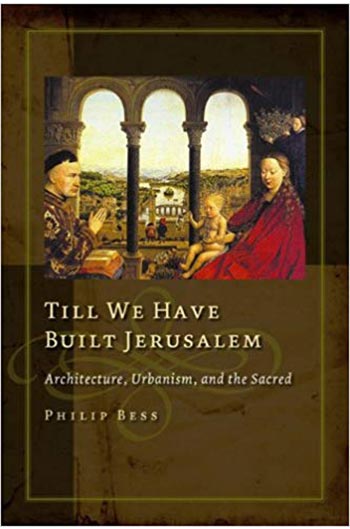
The polis, said Aristotle, “comes into existence, originating in the bare needs of life, and continues in existence for the sake of the good life.” In Till We Have Built Jerusalem (ISI Books, 2006), Philip Bess dares to take “polis” here to mean simply “city,” and he asks this question: What if everything that Aristotle and Thomas Aquinas said about cities was actually true, and what if we built cities in accordance with that reality?
Bess teaches urban design and architecture at Notre Dame and is active in the New Urbanist movement. He is also a practicing Catholic steeped in the political tradition of the Church.
It’s a maddening book – a series of essays which, like the Blake poem that is the origin of its title, can only be called visionary. One of the most outrageous (and probably correct) suggestions he makes is that the canons of urban design implied by Jane Jacobs and developed by the Charter of the New Urbanism aren’t just matters of aesthetic preference, but are actually part of the natural law. If what we are called to do is to promote human flourishing, and if brutalist architecture, suburban sprawl, and housing projects don’t do that, then they’re not just bad – they’re wrong. Le Corbusier shouldn’t just retire: he should repent.
“The architecture of the third millennium,” Bess writes, should “serve the primary symbolic purpose it served in earlier eras – the representation, in orderly, durable, functional, and beautiful buildings, of institutions that enable and encourage us to live as civilized human beings.” And the civilized human being is, for Bess, what he is for Saint Thomas: one whose nature, as he lives, with his fellows, in a city with a cathedral at its center, is being drawn to its own perfection and final end, in God.
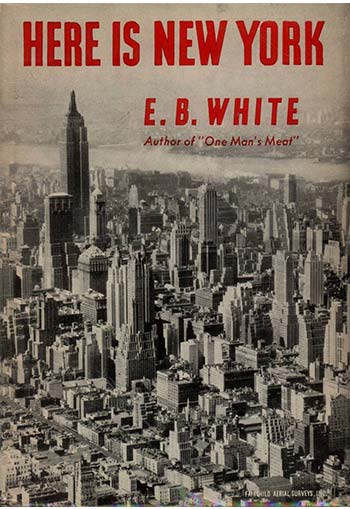
In a sweaty summer three years after the end of World War II, E. B. White wrote an essay that remains the greatest love letter New York City has ever received. “Here Is New York” (Holiday Magazine, 1948) is an attempt to grapple with a very big city in a very small space.
White has a sense of the fragility of New York: the infrastructure that is always overloaded; the systems, so many of them ad hoc, that keep everybody fed; the water of the harbor that always might overrun the seawall. And he has a sense of New York as a target that feels very contemporary: the possibility of nuclear war looms over the end of the essay. Above all, though, he shares with Jacobs the love of the city, because of its meaning as a site of human ambition and collaboration and unlikely fellowship. He writes: “The city is like poetry: It compresses all life, all races and breeds, into a small island and adds music. … The island of Manhattan is without any doubt the greatest human concentrate on earth, the poem whose magic is comprehensible to millions … but whose full meaning will always remain elusive.”
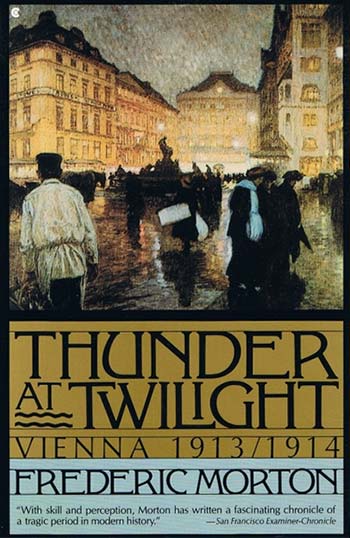
What White did for New York in compressed form, Frederic Morton did for his native Vienna. Thunder at Twilight: Vienna 1913/1914 (Scribner, 1989) is a cultural history of two years in the life of the city, and if White sees New York as potentially fragile, Morton knows for certain the fragility of Vienna. Those two years – a decade before Morton was born – saw the final flowering of the opulent capital city of the Hapsburg Empire, and the sheer number of people and events concentrated in that one time and place is dazzling. Carnival, 1913: Stalin arrives in Vienna on a mission for those who would become the revolutionaries of 1917. Over the next two years, Hitler paints and rants in beer cellars; Wittgenstein and Freud are each at the center of a separate intellectual circle; the white Lipizzaner stallions perform their highly choreographed dances in the Spanish riding school in the center of the city; everyone is highly strung, there are all the waltzes you could ask for, and everything seems to point to an explosion. That explosion happens, of course, when the young, potentially liberalizing heir to the throne, the Archduke Franz Ferdinand, is killed with his wife, Sophie, by the Serbian nationalist Gavrilo Princip. Morton’s Vienna did not survive World War I, but in his book, its richness lives on.
In 1881, a doctor who had served in the war in Afghanistan has found that his Army pension can’t support the cost of the hotel in the Strand where he’s been living. He faces a desperate choice: either leave London, or find a housemate. The first option is not to be thought of, and so it’s good for him – and for us – that Dr. John Watson meets Sherlock Holmes, who’s looking for someone to split the rent at 221B Baker Street.
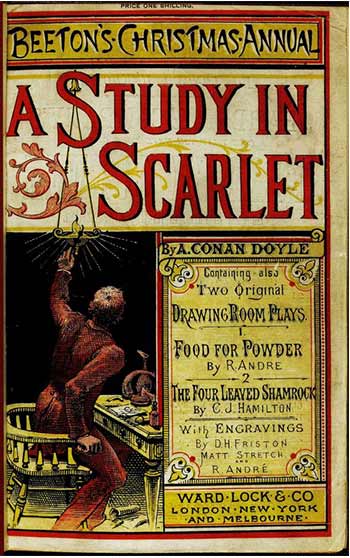
Arthur Conan Doyle set both A Study in Scarlet (1887) and The Sign of the Four (1890) in London; of the dozen stories in The Adventures of Sherlock Holmes (1892), the first of the collections, all but four take place there. The intense, address-level specificity of the stories gives them a documentary quality: it always seems that Holmes’s skill as a detective can’t really be separated from his street-by-street knowledge of London itself.
It’s Holmes who convinced the world that the city would be the suitable setting for this new genre: something like a thriller, something like an Arthurian quest to bring justice to the land. It’s a genre that brings together the romance of the gothic and the chivalry of the legends with the grit and irony of the modern world. Philip Marlowe’s Los Angeles and Sam Spade’s San Francisco owe Holmes’s London a debt, and so, too, does Batman’s Gotham City. But Holmes’s London still holds the honor of primacy.
Already a subscriber? Sign in
Try 3 months of unlimited access. Start your FREE TRIAL today. Cancel anytime.

































